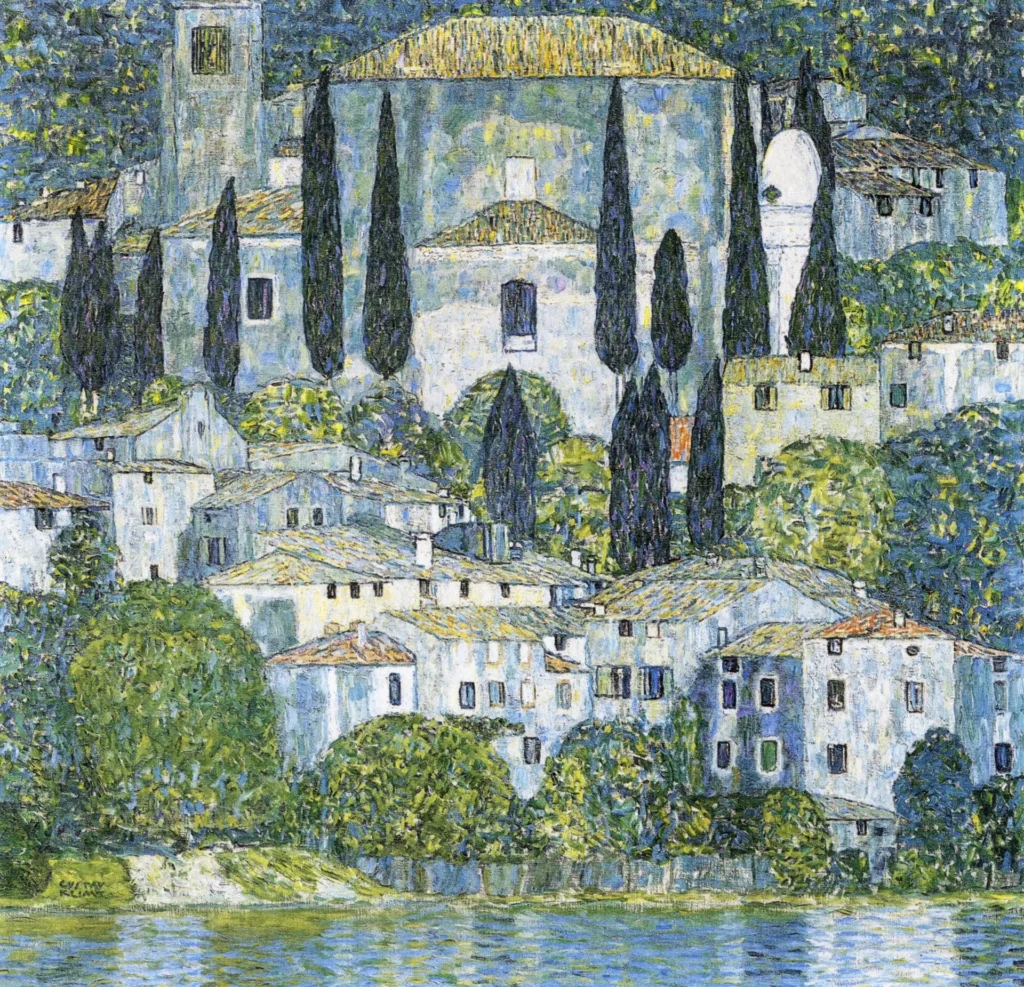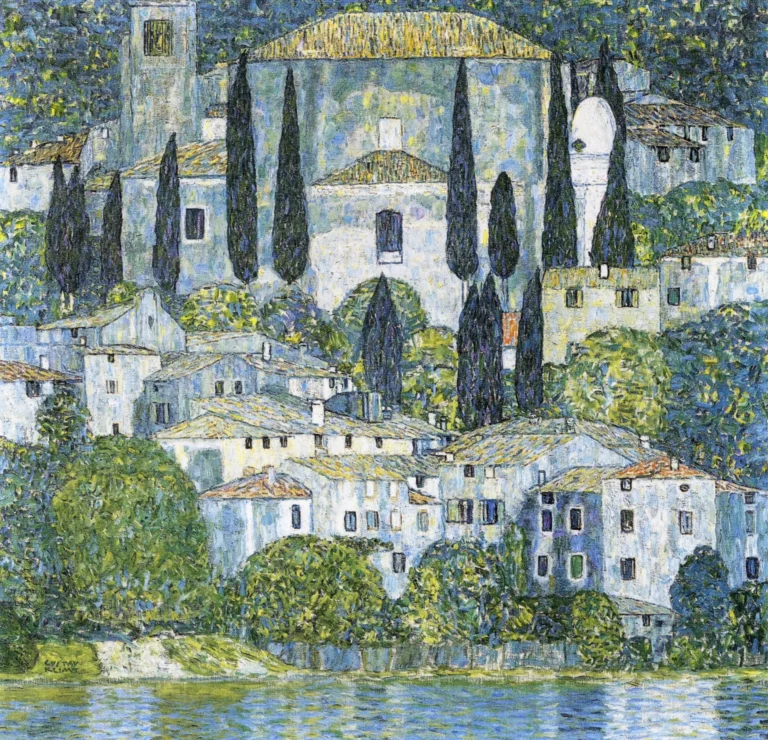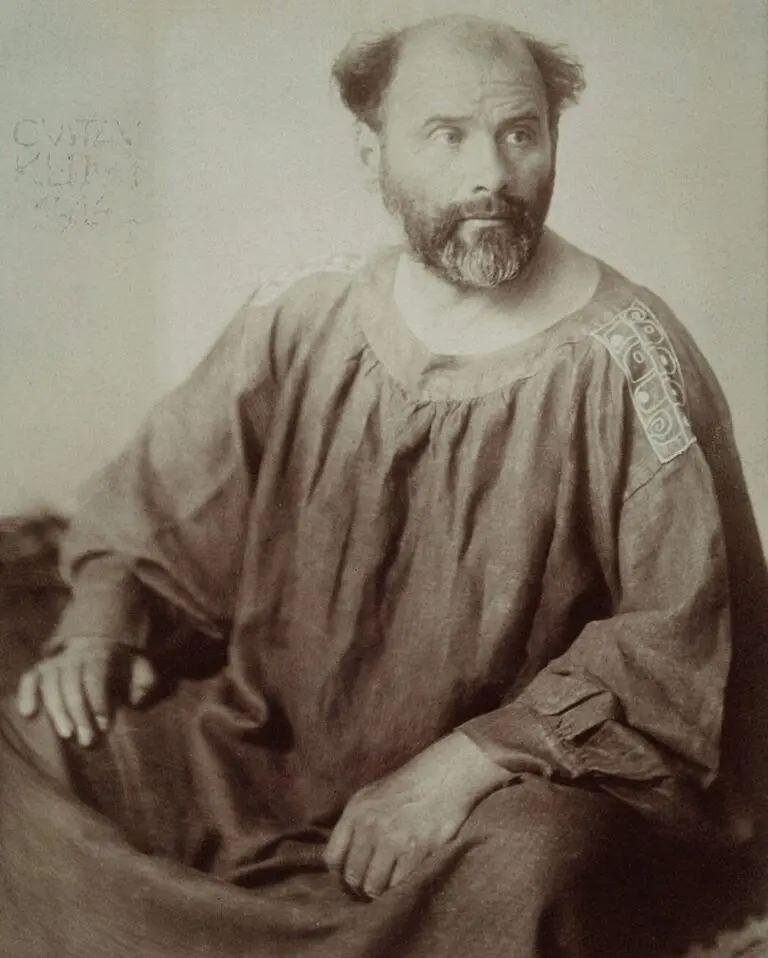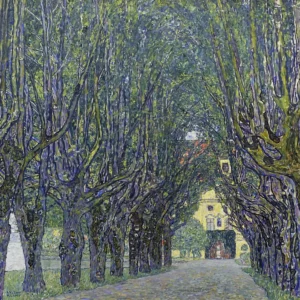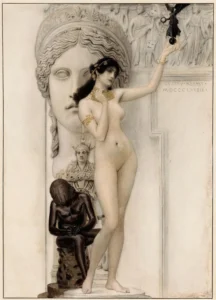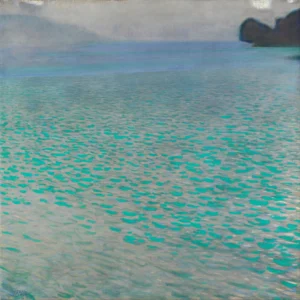Kirche in Cassone (1913)
Gustav Klimt's Kirche in Cassone is a captivating oil painting that measures 110 by 110 cm and showcases the picturesque village of Cassone located on Lake Garda in Italy. Created during Klimt's visit to the region in 1913, this artwork exemplifies his ability to intertwine lush greenery and architecture through innovative techniques. His fascination with patterns and textures is evident, as is the influence of Cubism, which Klimt absorbed during his time in Paris. This piece stands out not only for its beauty but also for being a unique representation of this location, as other works from this period have been lost.
1913
About the Artwork
Did You Know
Liked what you see? Add it to your collection.
Enjoyed reading? Share it.
... continued
Key Details
- Medium and Dimensions: The painting is executed in oil on canvas, measuring 110 by 110 cm (43 1/4 by 43 1/4 inches)
- Location and Subject: The painting depicts the village of Cassone on Lake Garda in Italy. It was created during Klimt's visit to the region from the end of July to mid-September 1913, where he stayed on the Val di Sogno Peninsula near Malcesine
- Technique and Style: The work showcases Klimt's innovative technique, combining lush greenery, houses, and architectural elements into a harmonious composition. It reflects his passion for patterns and decoration, as well as his fascination with the natural surroundings. The painting also exhibits influences from Cubism, which Klimt encountered during his trip to Paris in 1909 and through discussions with Egon Schiele.
Provenance
The painting has a well-documented provenance: Initially acquired by Viktor and Paula Zuckerkandl from the artist by 1914. Later owned by Amalie Redlich (née Zuckerkandl), Viktor's sister, until at least 1939. It then passed through several owners, including Galerie Welz in Vienna, Hans Fritz, and a private collection in Graz, before being acquired by its current owner.
Significance
Kirche in Cassone is one of the few landscape paintings by Klimt and the only remaining painting depicting Lake Garda and its architecture, as his other works from this period, such as 'Malcesine am Gardasee,' have been destroyed.
Artistic Observations
Alfred Weidinger noted that Klimt likely used an optical aid, such as a telescope, to achieve the perspective in this painting. The church, an octagonal building from the 17th century, is depicted as a large, scarcely sectionalized surface, with cypresses used as stylistic elements to clarify house corners. The painting's use of light and shadow adds to its dynamic and shimmering surface.




